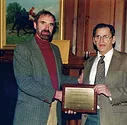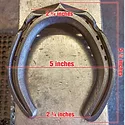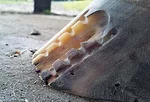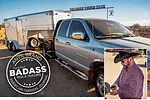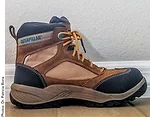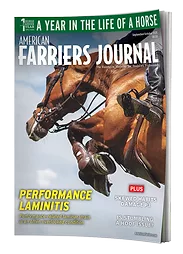Advertise Follow Us
American Farriers Journal

View Archived Issues
March 2021
Volume: 47
Edition: 2
American Farriers Journal is the “hands-on” magazine for professional farriers, equine veterinarians and horse care product and service buyers.
-
Table Of Contents
Table Of Contents
Tips for Recognizing and Creating Equine Hoof Shapes
Training your eye to understand the contours of the foot is critical to forging it at the anvilRead MoreShoeing for a LivingShoeing Sport Horses with Ty Garner
Shoeing top performance horses requires creative solutions and pursuing solid basicsRead MoreTips for Tuning Punches
Arkansas farrier and American Farriers Team member Adam Fahr explains his approach to maintaining this critical toolRead MoreSupporting the Horse’s Foot with a Horseshoe
When a horse needs ‘support,’ are farriers and clients on the same page for what this means?Read MoreCongratulations to the 2021 Hall of Fame Inductees
Horseshoer/educator and veterinarian researcher are selected by their peers for top honorsRead MoreHow Horseshoe Modifications Change Pressure Distribution at the Hoof’s Weight-Bearing Surface
Research suggests compromises to counteract unintended side effects of therapeutic applicationsRead MoreLiability Can Ruin a Farrier Business
Understanding the different legal issues that might arise enables horseshoers to protect their practiceRead MoreIn MemoriamHall of Fame Farrier Fred Cleveland
Virginia horseshoer is remembered for his skill and sense of humorRead MoreMail-In Exercise Challenge Deadline Extended
Evaluate and improve on your forging skills while making a hind to help a horse that may pull a front shoeHow Woodworking Techniques Can Aid Hoof Crack Repairs
Washington state farrier’s ladder method stabilizes capsule defectsRead MoreBadass Rigs & TrailersFarrier Rig Stands the Test of Time
Everything is within reach in the 20-year-old set up designed by a Phoenix-based shoerRead MoreA Sound Farrier Needs Proper Fitting Shoes
Incorrectly sized footgear fails to support your back, hips and jointsRead MoreShould Farriers Avoid Removing the Periople?
The membrane protects the hoof, but it could be at risk for infectionRead MoreResearch Journal: March 2021
“The information, ideas, and opinions expressed are those of the author and do not necessarily represent those of the United States Department of Agriculture."Read More -
Featured Articles
Featured Articles
Tips for Recognizing and Creating Equine Hoof Shapes
Training your eye to understand the contours of the foot is critical to forging it at the anvilRead MoreShoeing for a LivingShoeing Sport Horses with Ty Garner
Shoeing top performance horses requires creative solutions and pursuing solid basicsRead MoreHow Woodworking Techniques Can Aid Hoof Crack Repairs
Washington state farrier’s ladder method stabilizes capsule defectsRead More - Digital Edition
-
Online Extras
Online Extras









